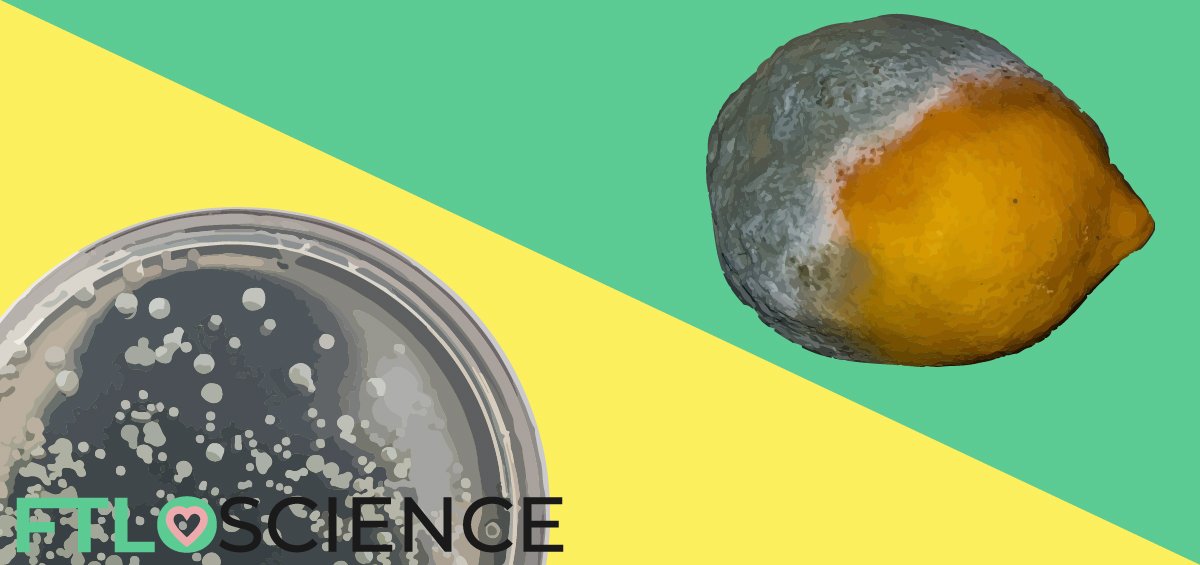Antibiotic resistance receives lots of media attention, being a huge threat to global public health. But an equally concerning problem remains relatively unknown to the general public: antifungal resistance. Fungal infections have the potential to cause rashes, mild inflammations, and even life-threatening diseases. Just like bacteria, drug-resistant fungi are especially deadly in immunocompromised individuals. The rising rates of resistance and the lack of new antimycotic drugs also make antifungal resistant strains of fungi a pressing public health issue.
Fungal Infections
When people think of fungi, they are usually thinking of things like mold, or nail infections at worst. These types of fungi, although irritating, are far from dangerous and usually easy to treat. Although fungi are known to pose problems mainly in agriculture, they are also a direct threat to human health. This is compounded by the rise in the number of antifungal-resistant strains.
300 different kinds of pathogenic fungi are known at this point, with most of them still existing around us today1. There are several classifications of fungal infections (also known as mycoses), depending on which parts of the body are affected.

Classification of Mycoses
A superficial mycosis is a fungal infection of the surface of the skin or hair and is usually caused by dermatophytes. Dermatophytes are keratinophilic, meaning they feed on keratin – the main component of skin. Symptoms of infection include rashes, skin discoloration, inflammation and even permanent hair loss. However, most of the time the immune system is able to get rid of the fungus and the skin heals spontaneously2.
In contrast to superficial mycosis, a subcutaneous mycosis (under the skin) develops after a traumatic infection with a fungus (meaning a wound has come into contact with a fungus). It is characterized by the initial appearance of small nodules that turn into lesions. These lesions then proliferate, causing discoloration and deformation of the skin. In immunocompromised patients, these diseases can affect other organs as well as the arterial system, causing considerable damage if they remain untreated3.
Lastly, fungi that cause a systemic mycosis (also known as deep mycosis) can overcome the defense barriers of the body by either changing their morphological features (dimorphic systemic mycosis) or by taking advantage of already compromised immune systems (opportunistic systemic mycosis), such as those in HIV patients.
These diseases cause lesions and flu-like symptoms which often resemble those of tuberculosis. They can also affect the nervous system and trigger meningitis or pneumonia. If these infections are not treated properly, they can lead to permanent health effects and even death4,5.
Allergic Reactions to Fungi
Considering that one type of mold can produce more than 40 allergens, it doesn’t come as a surprise that many people have allergic reactions when exposed to fungal spores. Just like the seeds or pollen of plants, spores are a part of the asexual reproductive system of fungi.
They are formed in a process called sporogenesis, after which they are released by the fungus. Spores are able to survive long periods in extremely unfavorable conditions until they reach a place to settle down, ideally somewhere moist and warm.
Allergic reactions can also be caused by eating fungi-contaminated food, leading to diarrhea or vomiting, but skin and respiratory diseases can be triggered as well. The genus Aspergillus can cause pulmonary fibrosis, bronchitis, rhinitis and asthma. In total, fungi are responsible for 5-10% of all recorded asthma cases6.
Antifungal Agents
In contrast to antibacterial drugs, the options for antimycotic drugs are much fewer. This is mostly due to the unique cell structure of fungi. Bacteria are prokaryotes, while fungi fall under the category of eukaryotes.
As it stands, the cell walls of fungi are effective drug targets. However, due to humans also being eukaryotes, the similarities between fungal and human cells would mean that drugs developed with this function are highly likely to harm our own cells.
One significant difference between human and fungal cells is that instead of containing cholesterol, fungal cell membranes make use of ergosterol7. Although these two molecules are highly similar in structure and function, we can still take advantage of small differences when developing antifungal agents8,9.

Other drug targets exist that disrupt fungal cells using different methods and mechanisms. In total, there are five different classes of antifungal agents in use today: polyenes, azoles, allylamines/morpholines, antimetabolites and echinocandins.
Polyenes
This class of agents aims to destroy the fungal cell’s osmotic integrity (in other words, it makes the cell membrane leaky) by disrupting the ergosterol in the cell membrane structure. Nyastin, amphotericin B and pimaricin are part of this group7.
Azoles
By targeting the biosynthesis of membrane sterols, cytochrome P450-dependent enzymes are inhibited. One such enzyme this class of drugs targets is lanosterol 14a-demethylase, also known as ERG11 or Cyp51A). Drugs in this class include clotrimazole, miconazole, ketoconazole, itraconazole and fluconazole7,12.
Allylamine and Morpholine Derivatives
Similar to Azoles, the biosynthesis of ergosterol is inhibited in order to damage the cell. Naftifine, terbinafine and amorolfine belong to this class7.
Antimetabolites
In contrast to the aforementioned drugs, this group does not target sterols but rather the DNA and RNA synthesis mechanisms. 5-fluorocytosine, an analog of cytosine, can replace the base pair and inhibit DNA synthesis within the cell7.
Echinocandins
This group works by inhibiting the enzyme b-(1,3)-D-glucan synthase, an integral part of the fungal cell wall. This destabilizes the structure of the cell, killing it. Approved drugs in this group are caspofungin, micafungin and anidulafungin10.
Antifungal Resistance
Just like antibiotic resistance, antifungal resistance originates from improper use. By taking doses that are too low or by not taking the drug for the entirety of the recommended period, the fungus can adapt and, in the end, become resistant. One noteworthy instance of this occurred during the acute and prophylactic treatment of AIDS patients in the 80s with antifungal drugs, which sped up the global antifungal resistance process immensely. Aspergillosis-associated mortality has also increased by 357% during the period between 1980 to 199711.
It is important that we have drugs that can effectively treat fungal infections. As mentioned before, a fungal infection might not be dangerous for healthy people, but it can become a deadly threat to immunocompromised patients. The body cannot fight off the infection and the fungus can spread into various parts and organs of the body.
The outcome of such infections can range from oral candidiasis, causing lesions in the mouth, to severe diseases like pneumonia, meningitis or myocarditis (inflammation of the heart)12. But how exactly does a fungus become resistant to the drugs that are specifically developed to kill it?
Mechanisms of Resistance
Since a lot of agents in antifungal drugs target the biosynthesis of sterols, one way for a fungus to become insusceptible to this is by changing their method of synthesis. Candida, for example, builds up their Azole-resistance by substituting amino acids (140 unique substitutions have been found so far) at the drug target site.
Against this group of drugs, mutations occur most often at the heme-binding site. Not only is this site responsible for binding the substrate that is used for biosynthesis of ergosterol (i.e. lanosterol), it is also the target of antifungal drugs that bind and block the receptor, hereby interrupting the synthesis.
Another way for fungi to become resistant to antifungal drugs is the overexpression of ERG11 or Cyp51A, the aforementioned enzymes that are responsible for ergosterol synthesis. This is achieved by amplifying the encoding gene; for a drug to inhibit the enzyme completely after this has occurred, a higher dosage is needed. This mechanism has been observed in Candida as well as Aspergillus.
For fungi to achieve multidrug resistance, efflux pumps are overexpressed. This causes the drug to flow out of the cell again, lowering the drug concentration inside the cell drastically. The systems used for this are the ATP-binding cassette (ABC) superfamily or the major facilitator superfamily (MFS)13.
Many fungi are also able to build biofilms, which are gel-like, adhesive substances that surround the cell and increase its resistance and stability. Biofilms consist of a gel-like extracellular polymeric substance (EPS) matrix, in which the cells are embedded. This allows the microorganisms to attach themselves to surfaces and serves as a protective layer. A prime example of biofilms is the one on our teeth. This is the reason why just rinsing alone is not enough to clean your teeth; they must be brushed to remove the biofilm and the organisms it holds14.
Other mechanisms include stress responses (Hsp90), genetic alterations and trans- or cis-acting elements (proteins or DNA sequences that control gene expression)13.

Overcoming Resistance
More and more strains of fungi are becoming resistant to antifungal drugs, but the number of infections is not decreasing; therefore, we are in desperate need of new agents. Immunocompromised individuals are especially at risk, and fungi are already one of the most common causes of nosocomial (in-hospital) infections.
New drugs that can overcome these antifungal resistance mechanisms are being researched, but, like antibiotics research, at a sluggish pace. Pre-clinical and clinical studies are also currently being undertaken, with most of them aiming to inhibit the biosynthesis of specific proteins, bases or sugars. It will, however, take some time until these drugs are officially approved. Until then, we must be aware of the threat that fungal infections pose15.
Reference
- Center for Disease Control and Prevention. (2017). Types of Fungal Diseases. Retrieved from https://www.cdc.gov/fungal/diseases/index.html
- Weitzman, I., & Summerbell, R. C. (1995). The dermatophytes. Clinical microbiology reviews, 8(2), 240-59.
- University of Adelaide. (2016). Subcutaneous Mycoses. Retrieved from https://mycology.adelaide.edu.au/mycoses/subcutaneous/
- University of Adelaide. (2016). Dimorphic Systemic Mycoses. Retrieved from https://mycology.adelaide.edu.au/mycoses/dimorphic/
- University of Adelaide. (2016). Opportunistic Systemic Mycoses. Retrieved from https://mycology.adelaide.edu.au/mycoses/opportunistic/
- Zukiewicz-Sobczak, W. A. (2013). The role of fungi in allergic diseases. Postepy dermatologii i alergologii, 30(1), 42-45. doi:10.5114/pdia.2013.33377
- Dixon, D. M., & Walsh, T. J. (1996). Medical Microbiology (4th Ed.). Galveston, TX: University of Texas Medical Branch at Galveston
- National Center for Biotechnology Information. PubChem Database. Ergosterol, CID=444679, (accessed on Mar. 28, 2019)
- National Center for Biotechnology Information. PubChem Database. Cholesterol, CID=5997, (accessed on Mar. 28, 2019)
- Grover N. D. (2010). Echinocandins: A ray of hope in antifungal drug therapy. Indian Journal of Pharmacology, 42(1), 9-11. doi:10.4103/0253-7613.62396
- McNeil, M. M., Nash, S. L., Hajjeh, R. A., Phelan, M. A., Conn, L. A., Plikaytis, B. D., & Warnock, D. W. (2001). Trends in Mortality Due to Invasive Mycotic Diseases in the United States, 1980-1997. Clinical Infectious Diseases, 33(5), 641-647, doi:10.1086/322606
- Musial, C. E., Cockerill, F. R., III, & Roberts, G. D. (1988). Fungal infections of the immunocompromised host: clinical and laboratory aspects. Clinical Microbiology Reviews, 1(4), 349-364.
- Cowen, L. E., Sanglard, D., Howard, S. J., Rogers, P. D., & Perlin, D. S. (2015). Mechanisms of Antifungal Drug Resistance. Cold Spring Harbor Perspectives in Medicine, 5(7), a019752. doi:10.1101/cshperspect.a019752
- Donlan R. M. (2002). Biofilms: microbial life on surfaces. Emerging Infectious Diseases, 8(9), 881-890.
- Wiederhold, N. P. (2017). Antifungal resistance: current trends and future strategies to combat. Infection and Drug Resistance, 10, 249-259. doi:10.2147/IDR.S124918
About the Author

Katharina was a science writer at FTLOScience from July 2018 to October 2019.




